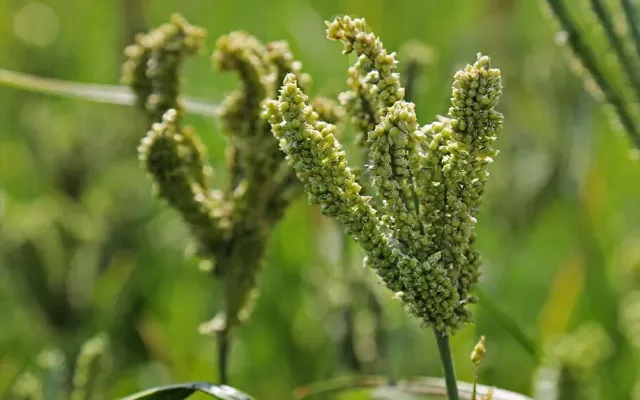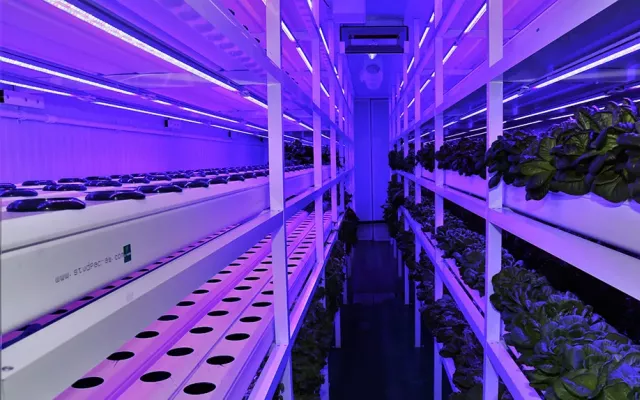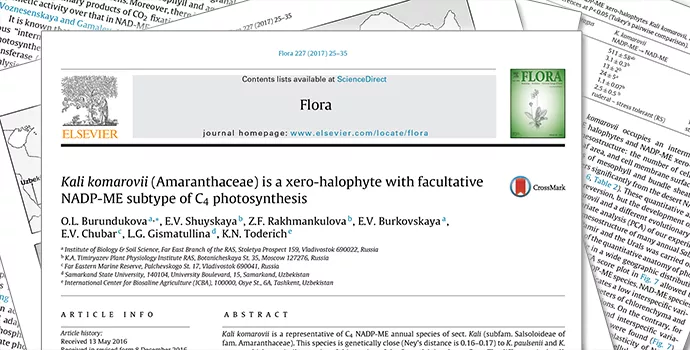New study shows how xero-halophyte plant adapts to coastal conditions
29 March 2017
A recent study by a team of researchers from Russia and Uzbekistan has shed new light on the structural and functional changes which ensure the adaptation of Kali komarovii, also known as land seaweed in Japanese, to saline, wet and cold conditions of the Sea of Japan coastal areas.
The research team, which included Dr. Kristina Toderich, a plant scientist at the International Center for Biosaline Agriculture (ICBA), compared the leaf mesostructure, water-salt balance and the genetic polymorphism of Kali komarovii with other species of the tribe Salsoleae with NADP-ME and NAD-ME subtypes of photosynthesis. In particular, the researchers studied coastal species Kali komarovii and four arid annual Salsoleae species.
The study published in Flora shows that the facultative NADP-ME subtype (ME stands for malic enzyme) of C4 photosynthesis has more capability to adapt to new climatic and edaphic environments than the ancient NAD-ME subtype.
In C4 plants carbon dioxide is first fixed into a compound containing four carbon atoms before entering the Calvin cycle of photosynthesis. The NADP-ME subtype of photosynthesis shows high adaptation to new conditions and unfavorable factors.
The identification of Kali komarovii as a xero-halophyte with the facultative subtype of C4 photosynthesis was based on its anatomical, biochemical and genetic characteristics. This species is genetically close (Ney’s distance is 0.16–0.17) to NADP-ME C4 xero-halophytes Kali paulsenii and Kali tragus, which are similar species of this section of the Central Asian desert flora.
Xero-halophytes are the desert species of halophytes and may grow in habitats where the soil is always saline but may periodically dry out to the extent as to cause problems with the availability of water for the plant. The difference is that Kali komarovii has high ecological plasticity and inhabits the Sea of Japan coastal areas and occurs at 9000–10,000 km away from Central Asia.
The study provided evidence that the development of the facultative subtype of C4 photosynthesis in Kali komarovii is caused by the influence of a combination of various specific factors such as high humidity, low temperature and soil salinity.
The study further confirmed that under saline environments or low temperatures, an important element in the adaptation of the NADP-ME subtype in the Salsoleae species is a variability of the primary carbon dioxide fixation pathways, which occurs through a partial inhibition of malate and an increase of aspartate pathways, i.e. a partial reversion to an ancient NAD-ME subtype.
This work was supported by the Uzbek Academy of Science and partly by the Russian Academy of Sciences.










